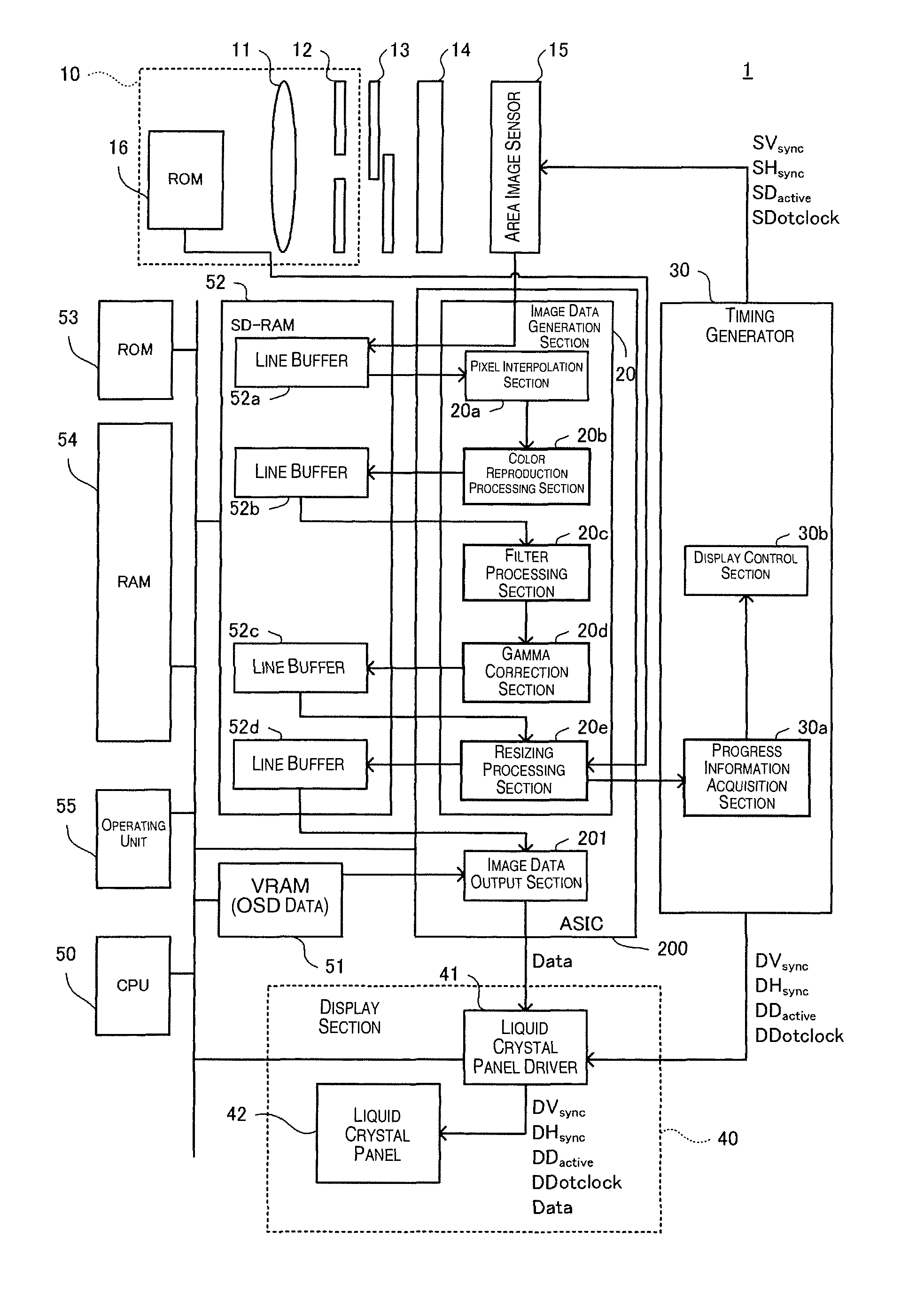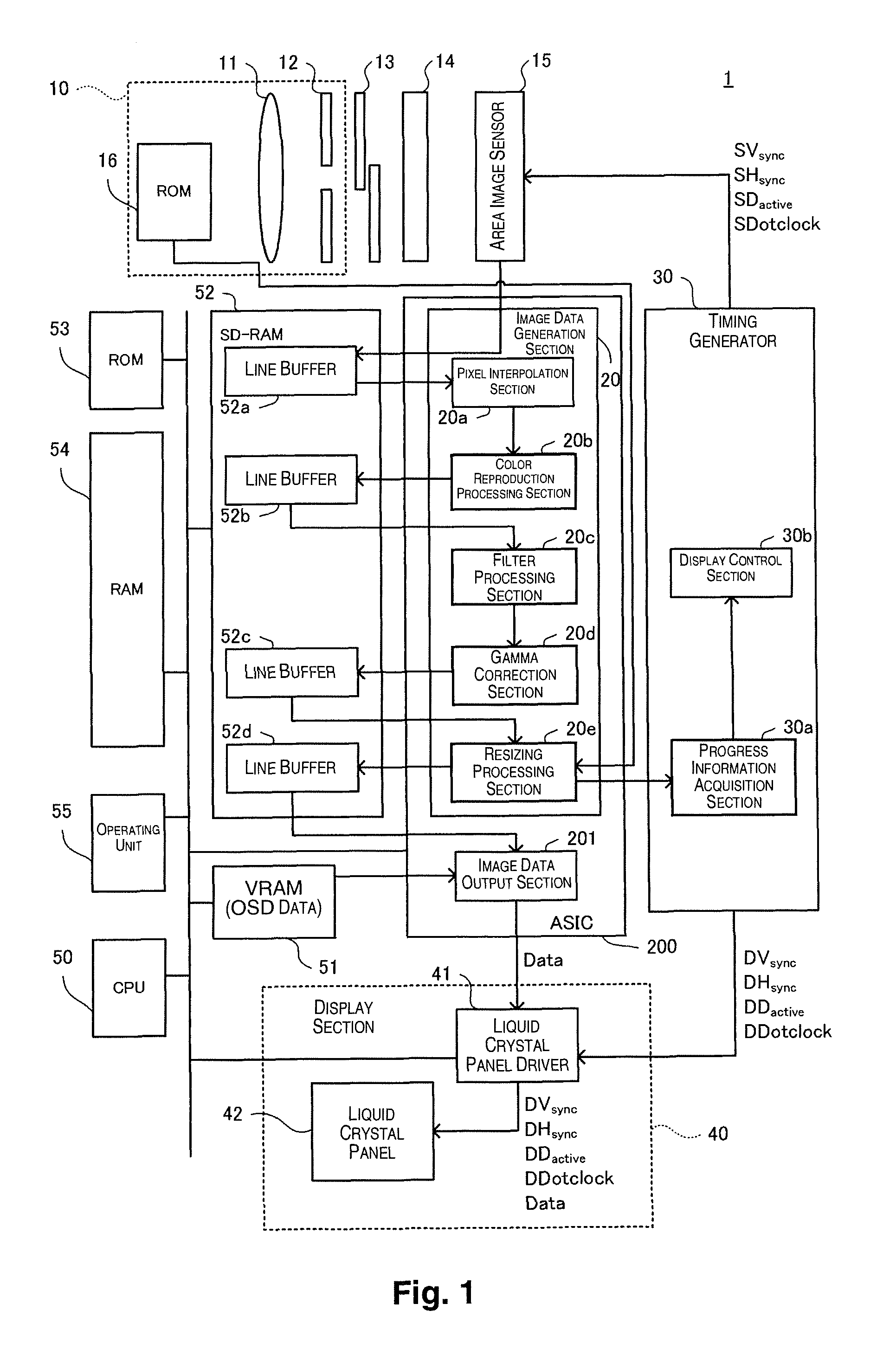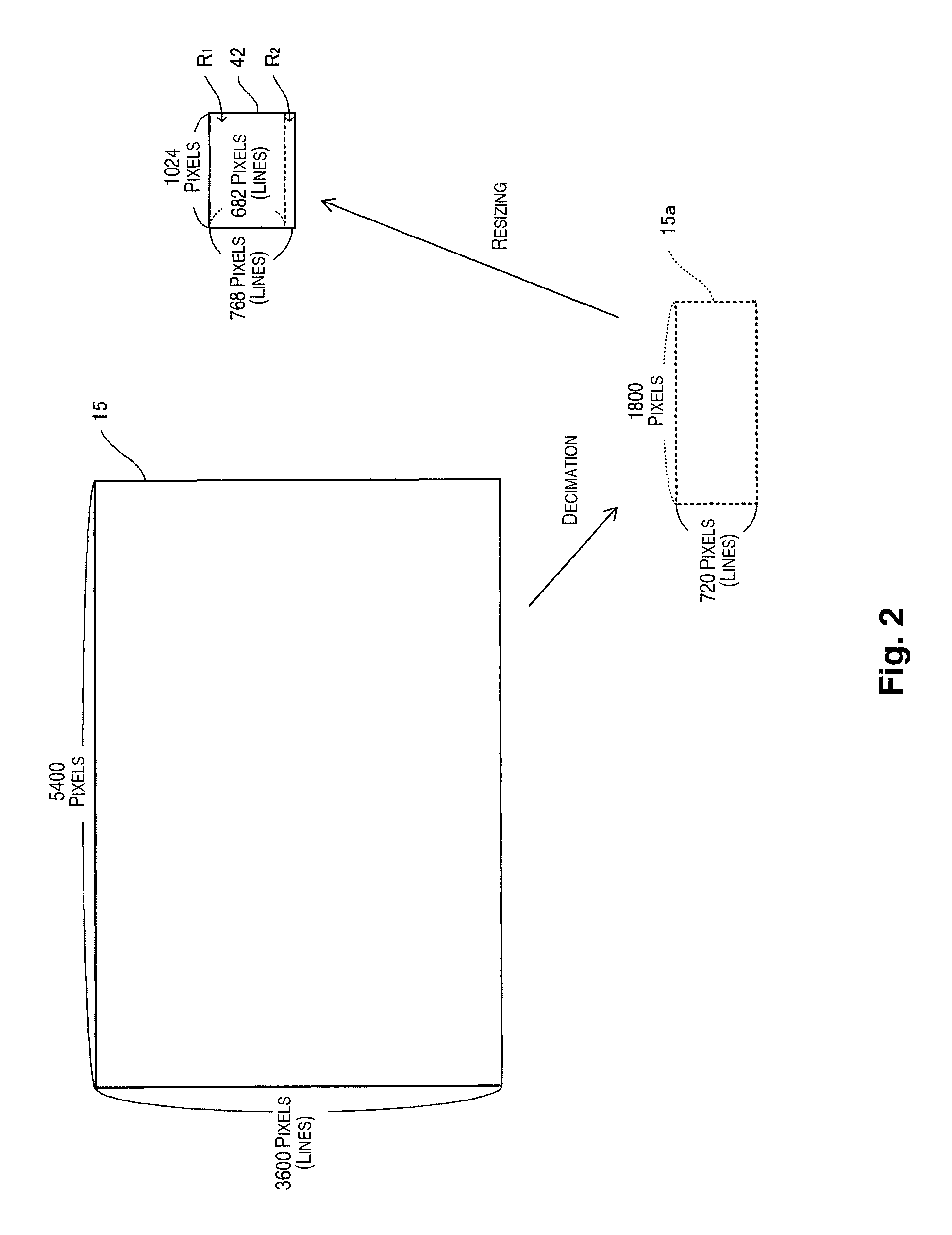Display control device
a control device and display technology, applied in the field of display control devices, can solve the problems of increasing unnecessarily long liquid crystal display, and the delay from the end of image data preparation, so as to prevent the delay, eliminate the distortion, and the effect of reducing the distortion
- Summary
- Abstract
- Description
- Claims
- Application Information
AI Technical Summary
Benefits of technology
Problems solved by technology
Method used
Image
Examples
Embodiment Construction
[0028]Preferred embodiments of the present invention will be described hereinafter in the following order: (1) Configuration of Image-capturing device; (2) Control of Horizontal Synchronization Signal; and (3) Other Embodiments.
(1) Configuration of Image-Capturing Device
[0029]In FIG. 1, an image-capturing device 1 including a display control device according to an embodiment of the present invention has an interchangeable lens unit 10, a shutter 13, a low pass filter 14, an area image sensor 15 (corresponding to the image-capturing section), an ASIC 200, a timing generator 30, a display unit 40, a CPU 50, a VRAM 51, an SD-RAM 52, a ROM 53, a RAM 54, and an operating unit 55. The CPU 50 can use the VRAM 51, the SD-RAM 52, and the RAM 54 as appropriate to execute a program recorded in the ROM 53. Using this program, the CPU 50 executes a function for generating image data indicating a subject imaged by the area image sensor 15 according to an operation by the operating unit 55. The op...
PUM
 Login to View More
Login to View More Abstract
Description
Claims
Application Information
 Login to View More
Login to View More - R&D
- Intellectual Property
- Life Sciences
- Materials
- Tech Scout
- Unparalleled Data Quality
- Higher Quality Content
- 60% Fewer Hallucinations
Browse by: Latest US Patents, China's latest patents, Technical Efficacy Thesaurus, Application Domain, Technology Topic, Popular Technical Reports.
© 2025 PatSnap. All rights reserved.Legal|Privacy policy|Modern Slavery Act Transparency Statement|Sitemap|About US| Contact US: help@patsnap.com



